The northern hemisphere night sky: the stars, planets and galaxies to spot this year
13 wonders of the northern hemisphere night sky that you can check out with the naked eye or study with a pair of binoculars
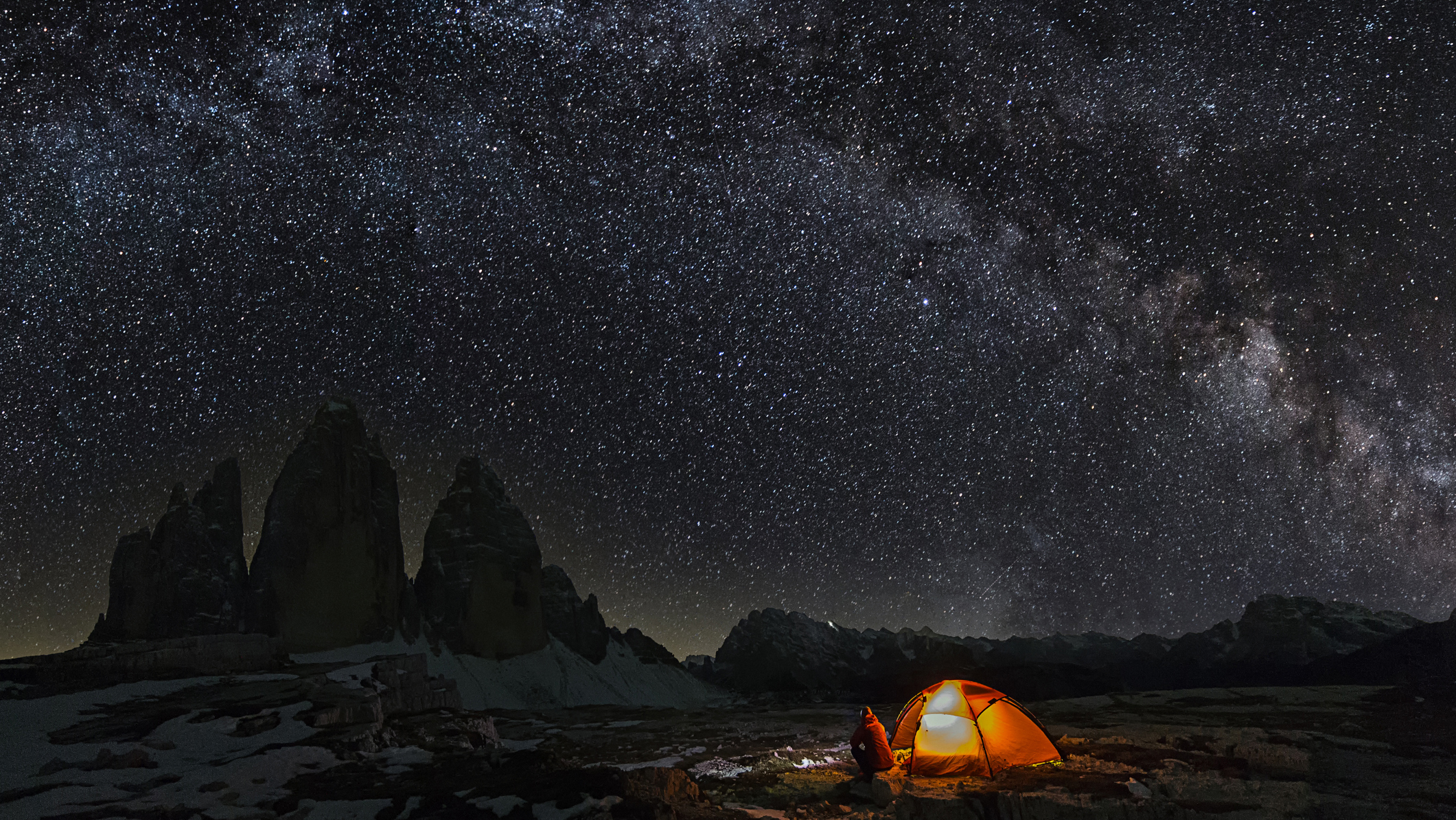
Regardless of the time of year, there's plenty to see in the northern hemisphere night sky, particularly if you escape into the backcountry, far from the light pollution of towns and cities. Winter boasts longer nights but the cold can make stargazing a challenge, while summer makes for a more comfortable experience, if you're willing to stay up that late.
It's all worth it though. On a clear night, the northern hemisphere night sky is ablaze with a display of moons, planets, stars, galaxies, star clusters and other phenomena. In fact, if you get yourself up to the Arctic, you'll stand a decent chance of witnessing the magical Aurora Borealis.
You don’t need fancy equipment, either. If you know where to look, you can see loads with the naked eye – though if you want to explore further, even a simple pair of binoculars will reveal objects that would otherwise remain hidden, such as the Galilean moons of Jupiter. Some binoculars are designed with stargazing in mind, such as the Celestron Skymaster 15x70.
There are numerous apps available (like Star Walk 2, Sky Map and Sky Safari) to help you get your celestial bearings. It's also worth investing in a headlamp, as you'll ideally be setting yourself up somewhere very dark, so you'll need to see where you're going! But otherwise it’s about wrapping up warm in a down jacket, looking towards the heavens and seeing what you can see. Here’s 13 things to look out for in the northern hemisphere night sky, followed by our main stargazing tips.
Meet the experts

Rich has been obsessed with outer space since a close encounter with Star Wars aged four. As a child he developed a keen interest in astronomy, and has tried to keep up with the latest developments in the cosmos - both real and fictional - ever since. Before Advnture, he was editor of market-leading sci-fi/fantasy magazine SFX, where he met several Starfleet captains, more Doctors and at least one Luke Skywalker. He also has a physics degree, which also involved stars, galaxies and other spacey phenomena.

As well as his love of the mountains, Alex is passionate about science, particularly when it comes to astronomy. Before becoming a writer and Mountain Leader, he was head of science at a London school and once had the privilege of speaking at the prestigious Royal Institution of Great Britain. He still enjoys studying the heavens with his telescope, counts Cosmos by Carl Sagan among his favorite books and always keeps one eye on the latest developments in our quest to fully understand the Universe.
Today's best deals
1. The Moon
- Taking a closer look at the Moon can be a rewarding experience
- Binoculars can be used to make out its surface features

It’s easy to take the most prominent object in the northern hemisphere night sky for granted – Earth’s nearest neighbor is so much brighter than everything else that you can’t really miss it. But taking a closer look at the Moon can be a rewarding experience, and a decent pair of binoculars reveals plenty of surface features invisible to the naked eye.
The numerous ‘seas’ and craters give you a sense of the Moon’s beautiful but barren landscape. And you don’t have to wait for the Moon to be ‘full’ before you can observe it at its best. Crescent and gibbous phases highlight some of the detail that’s obscured by the glare of the full Moon. The shadows you see as it waxes and wanes can be just as intriguing as the geography that creates them.
2. Jupiter and Saturn
- The sight of Jupiter and its four Galilean moons is one of the most incredible in the night sky
- Its four Galilean moons can be seen with the use of binoculars
- Saturn can be seen with the naked eye but not its famous rings
- Through binoculars, it can appear as an ellipse

Pioneering renaissance scientist Galileo transformed astronomy when he pointed his rudimentary telescope towards Jupiter, and saw four tiny dots of light in its vicinity. Centuries later, directing a pair of binoculars at the biggest planet in the Solar System is also enough to reveal the Galilean moons Ganymede, Callisto, Europa and Io. It’s one of the most wonderful sights in the northern hemisphere night sky, the sort of view that can kickstart a lifelong love of astronomy.
All the latest inspiration, tips and guides to help you plan your next Advnture!
Jupiter and fellow gas giant Saturn made news headlines in December 2020 because of the conjunction that saw them come closer together than they had since the Middle Ages. They’re now moving apart again, but are still briefly visible around sunset.
Saturn itself is viewable with the naked eye. You’ll need a telescope to resolve its famous rings, but eagle-eyed viewers with binoculars may see the planet as an ellipse.
3. Venus
- Venus appears as the brightest planet in the night sky
- It's often referred to as the Morning Star or the Evening Star

Thanks to its relative proximity to Earth and incredibly reflective atmosphere, Venus is the brightest planet in the northern hemisphere night sky. The fact that it’s so close to the Sun means it’s generally best sighted in the morning before sunrise, or the evening after sunset. It's sometimes referred to as The Morning Star or The Evening Star due to its bright appearance during these times of day and the fact it's the first celestial object that's visible in the twilight.
Looking at Venus through binoculars reveals that it has phases, just like the Moon’s – albeit on a significantly smaller scale.
4. Mars
- Mars appears as a red point of light in the night sky
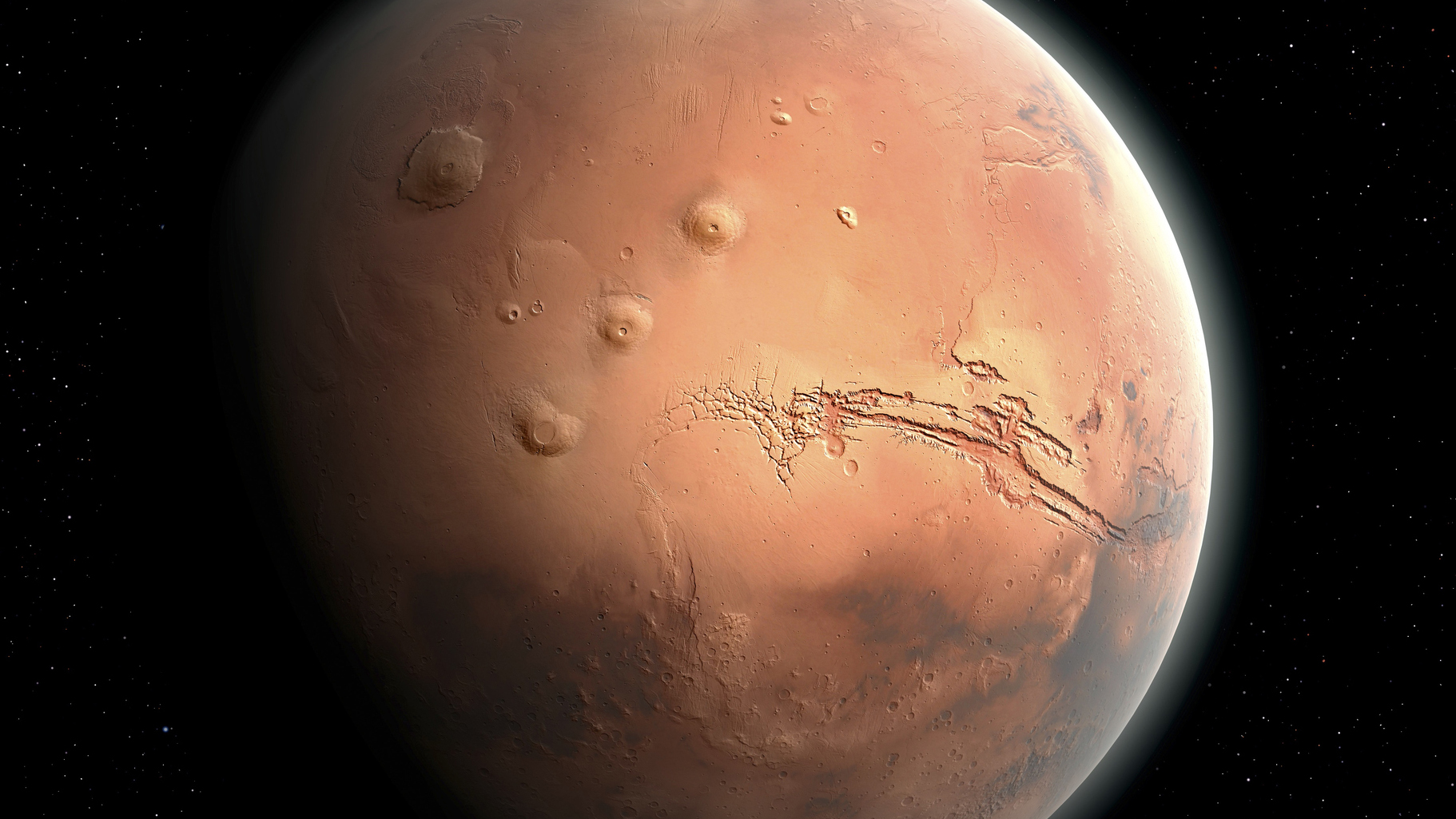
Has any body in the night sky inspired more stories than the red planet? While you won’t see any alien invasion forces – or even the supposed ‘canals’ that 19th century astronomers believed confirmed the existence of Martian life – it’s still well worth a look. Often visible in the evening sky, it’s unmistakable as a planet, moving across the background stars more quickly than the gas giants beyond it. Binoculars enhance the characteristic red colour that led to Mars being named after the Roman god of war.
5. The Big Dipper/Plough and Polaris (the North Star)
- The Plough is one of the most recognisable constellations
- It can be used to locate Polaris, the North Star, which is handy for navigation
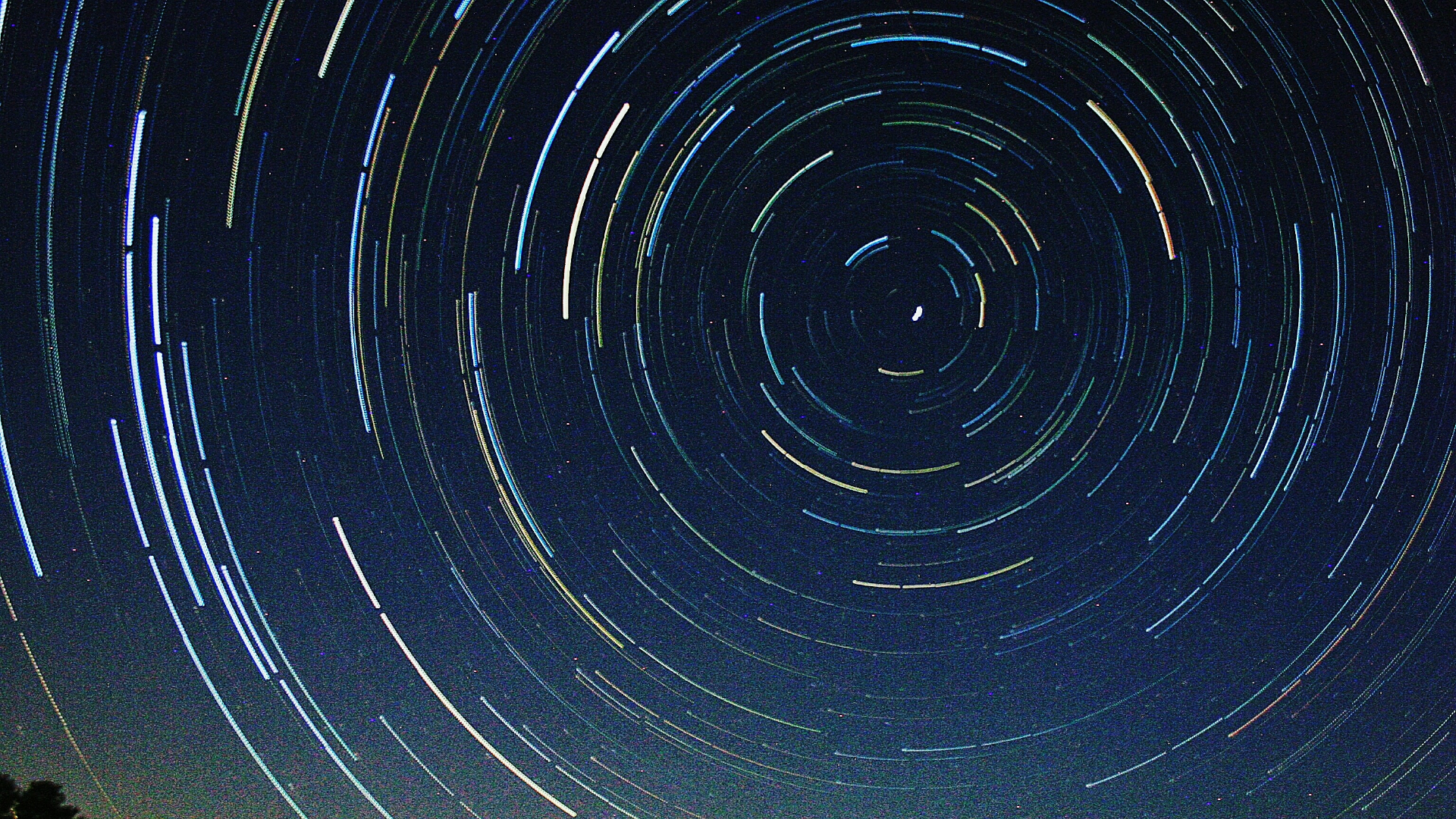
Whatever you want to call it, this famous constellation is one of the most recognisable in the northern hemisphere night sky, visible all year round in the UK thanks to its high latitude.
It’s also one of the most useful for navigation, thanks to the fact that the ‘Pointers’ (Merak and Dubhe, the two stars furthest away from the Dipper’s handle) show the way to Polaris, known to explorers for centuries as the North Star. Simply trace a line from the horizon through the Pointers, and you’ll reach Polaris, a handy indicator of north. Becaue it’s positioned near enough exactly over the North Pole, it remains a relatively fixed point in the night sky, instead of appearing to move as the Earth spins beneath the stellar tapestry. If you want to capture an image of star trails using long-exposure photography, aim your camera at Polaris, which will form the center point of the seemingly circling stars around it.
The Big Dipper has another astronomicl treat in its tail – a double star. Mizar and its fainter neighbor, Alcor, orbit each other, and are both visible with the naked eye. They become significantly clearer with binoculars.
6. Orion
- Orion is easily visible in the northern hemisphere night sky during the winter months
- It boasts Rigel and Beteguese, two of the brightest stars in the night sky
- It's also home to the Orion Nebula, a stellar nursery where new stars are born
- Orion's Belt can be used to point towards Sirius, the brightest star in the night sky
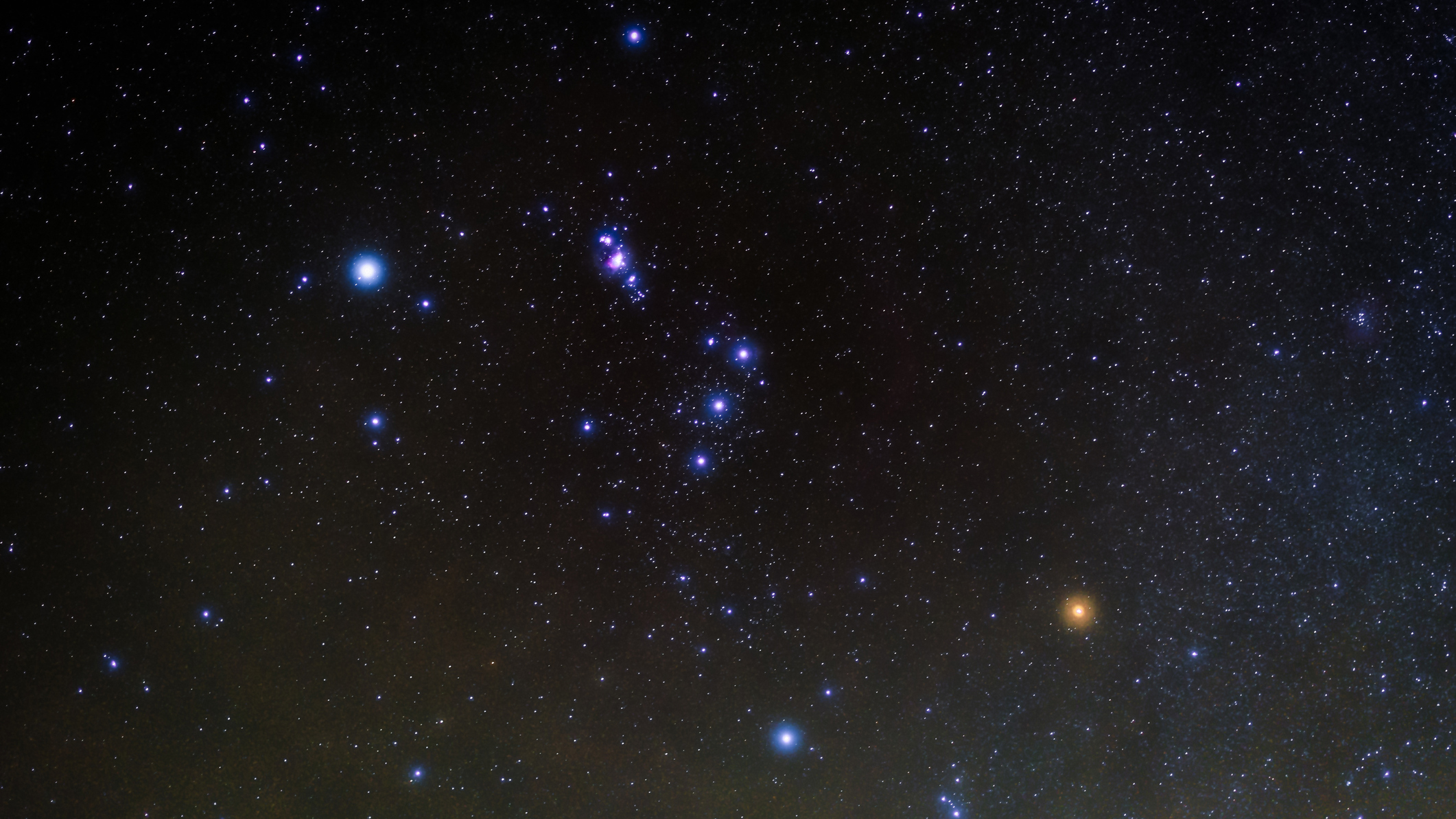
This giant of the northern hemisphere night sky is visible throughout the winter, and is one of the most prominent constellations. This representation of a legendary hunter boasts two of the brightest stars in the sky in Rigel and Betelgeuse, while Orion’s sword contains the famous Orion Nebula. New stars are being born in this vast cloud of dust and gas, and even binoculars are able to reveal some of its misty form.
Rigel and Betelgeuse are both remarkable in their own right. Rigel is a blue supergiant, many tens of thousands of times as luminous as the Sun and is 860 light years away. Yet, Betelgeuse is even more incredible. An absolutely huge red supergiant, if you were to place Betelgeuse in the Sun's current location, it would stretch out beyond the orbit of Mars towards Jupiter, engulfing all four of the inner rocky planets. It's a star in the final throes of life and will shortly (in astronomical terms) go out in a blaze of glory. It's thought that when Betelgeuse meets its end, possibly at some point during the next 100,00 years, the resulting supernova explosion will be visible in the daytime and will shine as bright as the full moon for several months. In a single moment, it will release more energy than the Sun will in its entire lifespan. Intriguingly, It might have already happened, as Betelgeuse is around 600 light years away, so we're looking 600 years into the past when we view it.
The three stars of Orion’s belt are also useful pointers to finding the brightest star in the night sky. Simply follow them to the west (left) and you’ll see Sirius in the constellation of Canis Major (the Great Dog).
7. The Summer Triangle
- The Summer Triangle is visible in summer and is made up of three stars
- The brightest is Vega, which is only 25 light years away
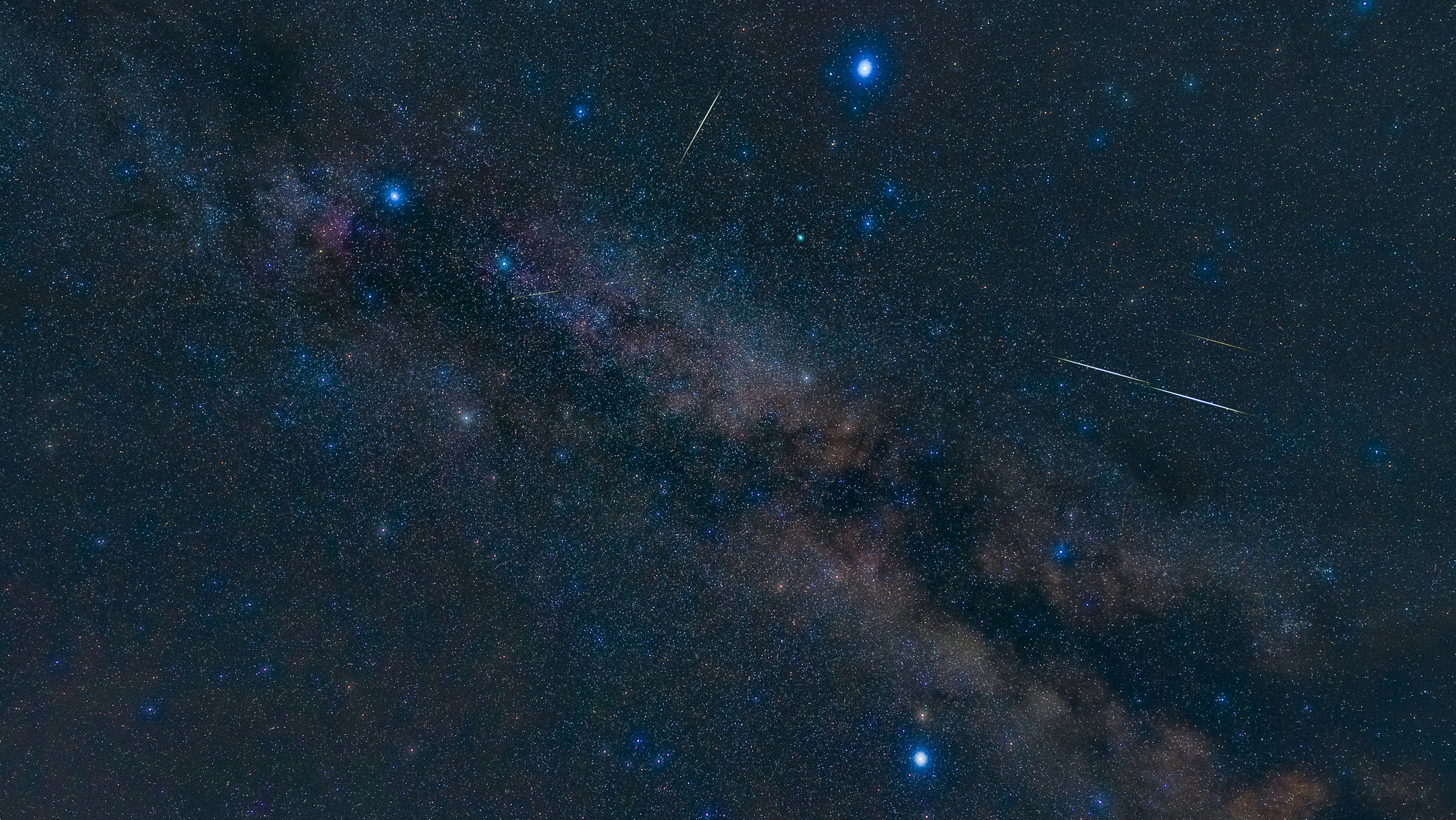
As its name suggests, the Summer Triangle is visible during the summer months and features three bright stars that form the three points of a triangle. It's not technically a constellation but an asterism, a conspicuous pattern of stars and the three stars that it's made up each belong to different constellations.
The shiniest jewel in the Summer Triangle is Vega, the fifth-brightest star visible from Earth and the third-brightest in the northern hemisphere night sky. It's "only" about 25 light years away, which means the light has travelled for 25 years to reach your eye.
8. The Pleiades
- The Pleadies is a vast group of bright young stars
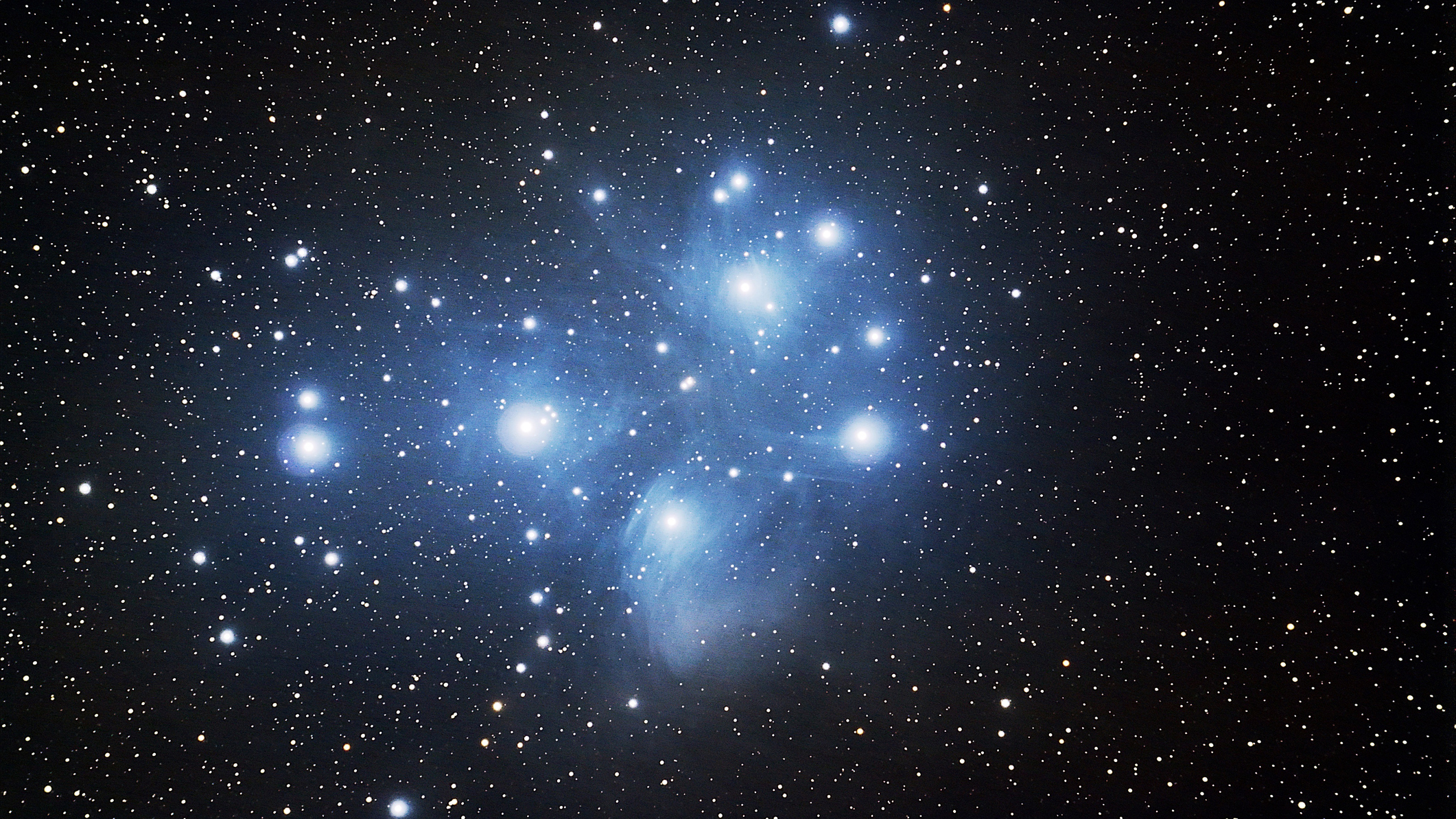
Follow Orion’s belt in the other direction from Sirius and you’ll find yourself in Taurus, the sign of the Zodiac representing the bull. Above the characteristic V shape, you’ll see the Pleiades, also known as the Seven Sisters. Looking like a fainter, smaller version of the Big Dipper, this famous cluster is a group of young (by astronomical standards, at least) stars. While a few (more than seven!) are usually visible with the naked eye, binoculars reveal more of a vast group of stars that actually covers way more of the sky than you’ll see without a powerful telescope.
9. The Milky Way
- When viewing the Milky Way, you're staring into the heart of our galaxy
- The Milky Way is difficult to spot when there's light pollution
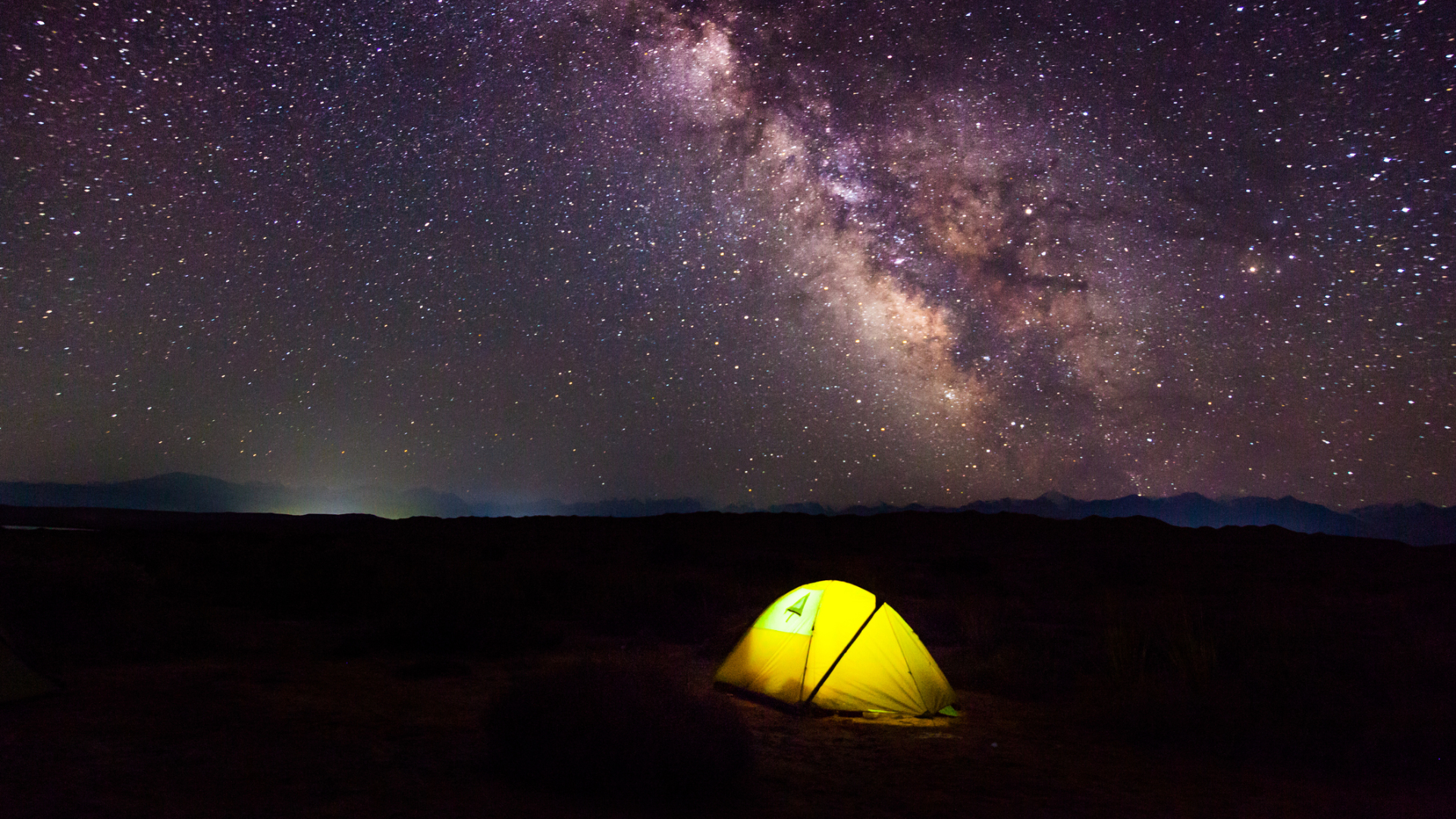
If you live in a town or city, you may have forgotten the Milky Way is even there – as soon as light pollution comes into the equation, the bulk of stars that form the plane of our galaxy are incredibly difficult to spot. Find suitably dark skies, however and this is one of the most beautiful sights of the night sky, a cascade of light cutting through the heavens like a river. It's essentially our front-row seat view towards the heart of our galaxy. Binoculars can’t improve your view of the Milky Way, so just lie back and enjoy one of the most spectacular views in nature.
10. The Andromeda Galaxy
- The Andromeda Galaxy is one of our Milky Way's closest galactic neighbors
- In the night sky, it's a fuzzy patch of light below the W-shape of Cassiopeia
- Over 2 million light years away, it's the most distant thing you can see with the naked eye
- In around 4.5 billion years, the Andromeda Galaxy will "collide" with our own

It’s neither the brightest nor most spectacular object in the northern hemisphere night sky, but when you think about what you’re actually looking at, the Andromeda Galaxy is truly awe-inspiring. Visible in a dark sky as a large, fuzzy patch of light bigger than a full moon (it’s slightly clearer with binoculars) the Andromeda Galaxy can be found just below the distinctive and ever-present W-shaped constellation Cassiopeia. It’s one of our own galaxy’s nearest neighbors.
That doesn’t mean it’s close by, however – it’s the most distant celestial object visible with the naked eye, so far away that the light we’re seeing left it over two million years ago. That’s many millennia before the first humans walked on Earth.
In around 4.5 billion years, our galaxy and the Andromeda galaxy with "collide". The reason the word collide is in inverted commas is that the space between the stars in each galaxy is so vast that collisions are unlikely. The two galaxies will become locked in a monumental gravitational dance and eventually form a new, larger galaxy.
11. Meteors
- Meteors are small pieces of ice and rock that burn up in our upper atmosphere
- They're often referred to as 'shooting stars'
- Meteor showers offer the best chance of witnessing them
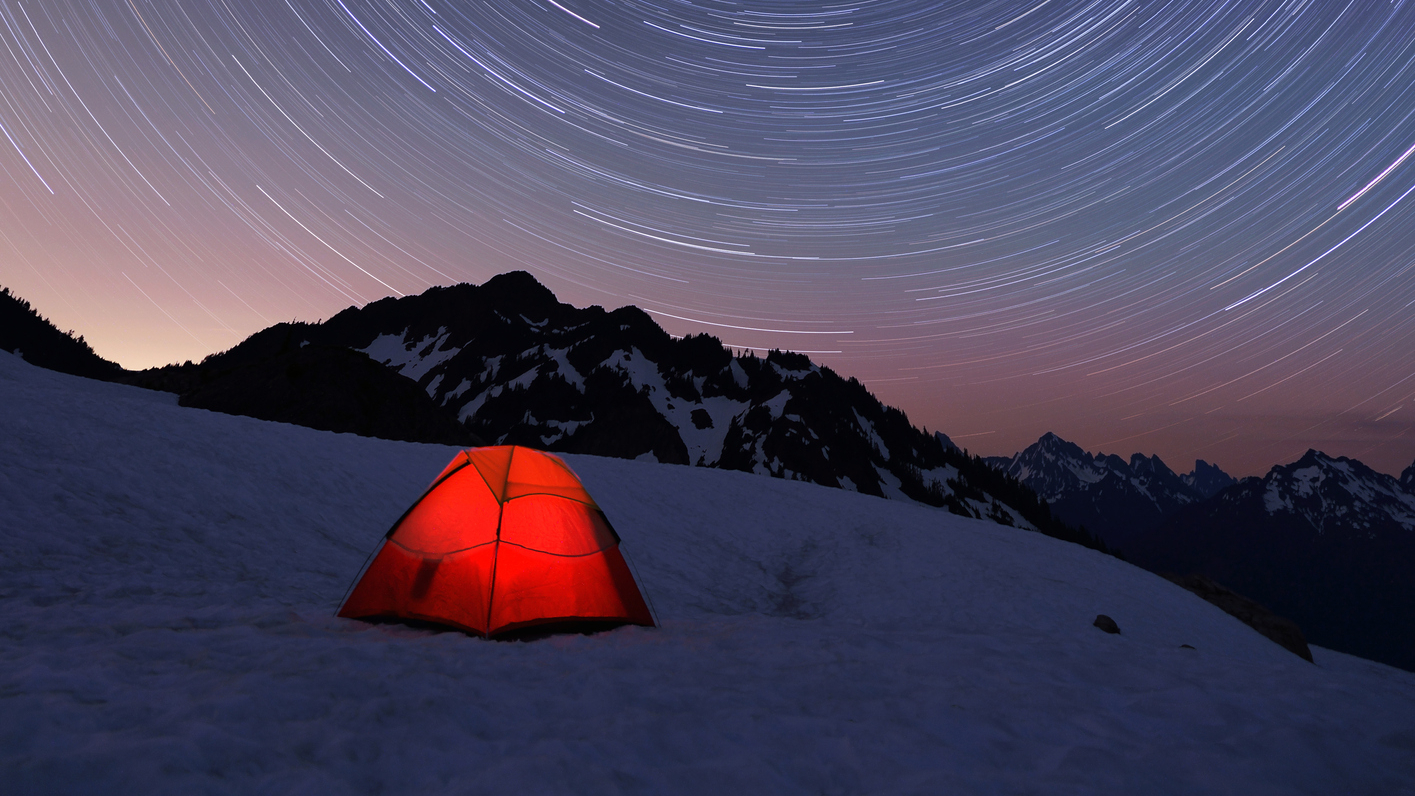
The most fleeting visitors to the northern hemisphere night sky are also among the most spectacular. When small pieces of rock and ice burn up in the atmosphere, they create a short-lived trail of light, visible for seconds at most, colloquially (but incorrectly) known to most of us as ‘shooting stars’. You can’t plan where or when you’ll see them – they’re most often spotted out of the corner of your eye – though you can improve your chances of a sighting during meteor showers. This Space.com guide explains where and when you can see some of the best.
12. The Aurora Borealis
- The Aurora Borealis are the result of charged particles from the Sun interacting with the Earth’s magnetic field
- The phenomena is often visible in the night sky above Arctic regions

Winters may get colder and darker the further north you go, but surely the Aurora Borealis is the consolation that makes it all worthwhile. These spectacular light shows – caused by charged particles from the Sun interacting with the Earth’s magnetic field – are one of the true wonders of planet Earth. There’s a reason many people spend thousands on trips to see the northern lights.
The best places to see the Aurora Borealis are near the Auroral Oval, which loops around the magnetic North Pole. This means Arctic regions like Northern Scandinavia, Iceland, Greenland, Northern Canada and Alaska are all frequently blessed with auroral displays.
13. Man-made objects
- The International Space Station can be seen with the naked eye
- NASA's Spot the Station website has information on when to see it
- Elon Musk's Starlink satellites are also impressive
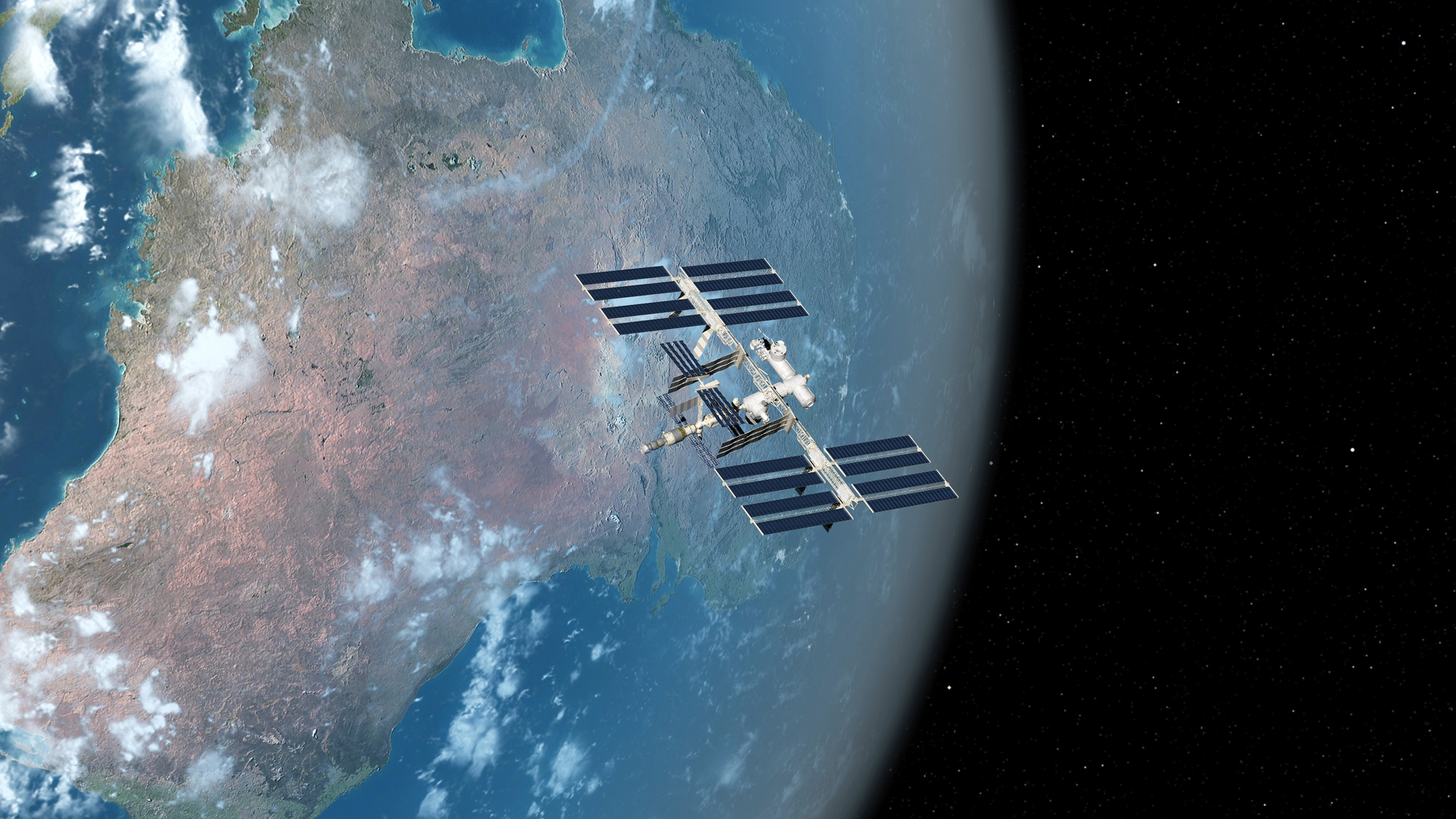
Not everything worth seeing in the northern hemisphere night sky is a natural object. The most impressive (and prominent) artificial body visible is undoubtedly the International Space Station, and NASA has a handy Spot The Station site to tell you when the ISS will be arcing its way over your location. You can also see numerous satellites working their way across the night sky. Particularly impressive are Elon Musk’s Starlink satellites, which appear as trains of lights working across the sky – they look like something out of Close Encounters of the Third Kind.
Stargazing tips
Here are our expert tips for enjoying the northern hemisphere night sky with your naked eyes or a pair of binoculars.
Escape urban areas: The light pollution from cities and towns obscures much of the glory of the night sky. Your best bet is to seek out places renowned for the quality of their night skies, such as the best national parks for stargazing or International Dark Sky Places.
Cold, crisp, moonless nights: Before we get into this, big shout out to the Moon! It's one of the most incredible objects in the night sky to study. However, it is also very bright, reflecting loads of photons from the sun. This means that when the Moon is out, everything else suffers. So, cold, dry, moonless nights offer the very best stargazing, as the atmosphere is clearer.
Let your eyes adjust: Once you've found your ideal spot, you're gonna need to wait 15-30 minutes for your eyes to adjust to the low light. So, turn that flashlight out, wait and watch the celestial heavens emerge.
A larger objective lens is ideal: For stargazing, choose binoculars with large objective lenses. If you know what the numbers mean on a pair of binoculars, you'll know that the larger the objective lens, the more light it lets in, which is crucial for viewing objects in the night sky.
Use a tripod: Whatever kind of binoculars you use, you'll get a much more stable image by using a tripod. Plus, you'll be able to more easily find the object you're studying again, when you pull your eye away for a sip of coffee from your flask.
In a previous life, Richard spent over a decade on market-leading sci-fi/fantasy magazine SFX, where he talked movies, TV and books with some of the biggest names in the genre. Having swapped Star Wars and Star Trek for the great outdoors, he's worked on Advnture since it launched in July 2020, and looks after the day-to-day running of the site.
